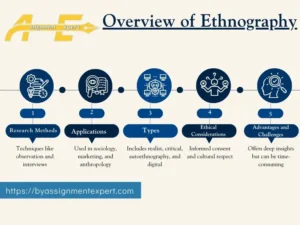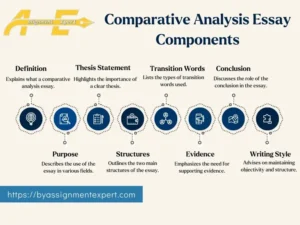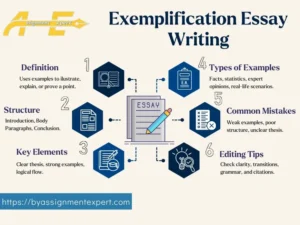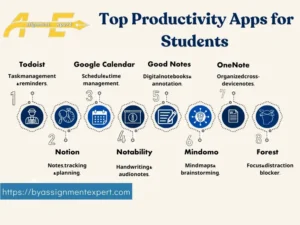A personal SWOT analysis is a structured tool designed to assess individuals’ strengths, weaknesses, opportunities, and threats at various stages of their lives. Initially used in a business context, the SWOT analysis has become an important instrument for personal advancement. It allows individuals to evaluate their present situation, find areas for improvement, and capitalize on potential opportunities.
By calculating the personal SWOT analysis, you expand a thorough identification of your internal strengths and external encounters. This allows you to make notified decisions and progress practical approaches to succeed in your personal statement writing.
How to Write a SWOT Analysis?
Making a SWOT investigation requires an assessed strategy to recognize and choose the four critical components: strengths, weaknesses, opportunities, and threats. Here’s how to do it:
1. Start with Strengths
- Find your strengths in various areas of life, such as skills, characters, and resources.
- Think about what makes you stand out and how you can utilize these qualities to achieve your objectives.
2. Find Weaknesses
- Be genuine with yourself about areas where you strive for or deny.
- Look at how these shortcomings may ruin you and what you can do to address them.
3. Explore Opportunities
- View external influences that could advantage you, such as industry trends, innovative technologies, or educational opportunities.
- Count how these opportunities associate with your strengths and how you can take advantage of them.
4. Assess Threats
- Recognize potential challenges or problems that could delay your progress.
- Think about both instant and long-term threats, such as economic changes or changing industry requirements.
5. Analyze and Prioritize
- After listing all elements, examine how they cooperate. For case, consider how your qualities can advantage you in overcoming dangers or how tending to shortcomings can open modern openings.
- Arrange the most known factors in each group to focus your efforts efficiently.
Writing a SWOT Analysis on Yourself
Composing a SWOT examination on yourself proves a most extreme self-replication preparation to calculate your individual and proficient life. Here’s a step-by-step guide:

1. Reflect on Your Strengths
- Ask yourself what you do well. What skills or values have others admired you for?
- Consider your achievements and how you carried out them.
2. Acknowledge Your Weaknesses
- Think about the areas of your effort. What tasks do you prevent? Where do you feel less confident?
- Be honest with yourself. Recognizing shortcomings is principal for individual development.
3. Find Opportunities in Your Environment
- Explore external factors that could help you. Are there developing trends in your industry that support your skills?
- Consider opportunities for learning and development, such as workshops, courses, or mentorship programs.
4. Consider External Threats
- Recognize components outside your control that seem to display a challenge
- Are there any changes in your industry that could influence your job security?
- Think about how you can organize for these threats or moderate their influence.
5. Create an Action Plan
- Based on your evaluation, develop a plan to control your strengths, improve your weaknesses, grab opportunities, and moderate threats.
- Set quantifiable objectives to direct your endeavors.
Why is Personal SWOT Analysis Important?
Individual SWOT Investigation is essential since it presents a developed strategy for self-valuation. It allows you to:
- Recognize Your Strengths: Understanding your strengths benefits you in various circumstances, whether in your occupation, relationships, or personal growth.
- Acknowledge Your Weaknesses: Acknowledging your weaknesses is the first step toward defeating them. It eases you to concentrate on areas that want improvement.
- Find Opportunities: By estimating your environment and conditions, you can recognize opportunities that are associated with your strengths and interests.
- Predict Threats: Finding potential threats aids you in preparing for challenges and minimizing dangers.
The Role of Self-Awareness in Personal SWOT Analysis
Self-awareness shapes the establishment of an effective personal SWOT analysis. Being concerned about almost all your qualities and shortcomings allows you to recognize objectives that are related with your capabilities and affect your advancement. Self-awareness also eases you to acknowledge external opportunities and threats more clearly. It eases you to recognize how others find you, which can be crucial in personal and professional relationships.
How Personal SWOT Analysis Can Guide Your Career Path
An individual SWOT examination is especially useful when you are planning for your career. By recognizing your strengths and weaknesses, you can make choices in almost all the parts and businesses that are best for you. It also helps you find areas where you need to improve your skills or experience to advance in your career path.
For example, if you have persuasive communication skills but lack technical expertise. You can focus on roles that emphasize interpersonal communication and continue to develop your technical abilities.
Personal SWOT Analysis Examples
In an individual SWOT investigation, you evaluate your qualities, shortcomings, openings, and dangers since they are important to your individual and proficient life. Here is a summary of each element with examples:
Strengths
These are your inner characteristics that give you value. Examples include powerful communication abilities, a positive attitude, or capability in a certain ability.
Example: If you’re a student with solid reasonable skills, this could be a strength that supports you to shine in research projects.
Weaknesses
These are inside components that put you at a shortcoming. Illustrations incorporate delay, the need for involvement, or destitute time organization.
Example: If you struggle with public speaking, this could be a weakness that influences your presentation and performance.
Opportunities
These are outside reasons that you can affect your benefit. Examples require production trends, networking events, or educational shows.
Example: If there’s an expanding requirement for data market analysts in your industry, this could be a chance to improve your data analysis abilities.
Threats
These are outside impacts that might cause issues for you. Examples include economic decreases, increased opposition, or changes in technology.
Example: If your production is meeting automation, this could be a threat to job security.
Personal SWOT Analysis Examples for Students
For students, a Personal SWOT Analysis can be an exceptional tool for academic and career planning. Here are some examples:
Example 1: A high school student planning for college
- Strengths: Solid academic record, suitable time management, leadership experience in school clubs.
- Lacks: Efforts with regulated test-taking, limited supplementary involvement.
- Opportunities: College scholarships, internship programs, advanced placement courses.
- Threats: Extreme contest for college admissions, financial limitations.
Example 2: A college student preparing for the job market
- Strengths: Applicable coursework, internship experience, and strong networking abilities.
- Weaknesses: Deficiency of full-time work experience, occasionally procrastination.
- Opportunities: Career fairs, industry conferences, and online certification programs.
- Threats: Economic downturn affecting job availability, instant technological changes in the industry.
Common Mistakes to Maintain a Strategic Distance in an Individual SWOT Analysis
When you are performing a personal SWOT analysis, it is necessary to look for some common mistakes that frequently occur, such as:
- Staying Too Serious or Naive: It’s needed to be honest but prevent being too difficult on yourself. In the same way, don’t overstate your capabilities or try to cover your weaknesses.
- Ignoring External Effects: Believe that opportunities and risks are external factors. Do not slip them with internal concerns such as strengths and weaknesses.
- Not Playing: A SWOT analysis is significantly beneficial if it contains actionable advice. Utilize the perspectives you get to make a useful arrangement for individual improvement.
Conclusion: Making the Most of Your Personal SWOT Analysis
Individual SWOT analysis is a compelling way of assessing your qualities, shortcomings, openings, and results. By significantly identifying these factors you can get an effective understanding of your specific goals and targets for the future.
Whether you are a student planning your educational journey, aiming for career advancement, or looking to enhance personal skills, conducting a personal SWOT analysis with confidence provides essential alignment for moving forward.
The key is to be honest, profound, and proactive in using the information you gather to create meaningful change in your life.
FAQs About SWOT Analysis
What is a personal SWOT analysis?
A personal SWOT analysis is a self-evaluation tool that helps you assess your Strengths, Weaknesses, Opportunities, and Threats to recover personal and professional progress.
Why should I conduct a personal SWOT analysis?
Appearing in a personal SWOT analysis permits you to get a feeling into your qualities and shortcomings, discover openings for development, and arrange for potential challenges.
How often should I update my Personal SWOT Analysis?
It’s a good idea to update your personal SWOT analysis regularly, such as once a year or whenever there are known changes in your life or goals
What should I do after completing a Personal SWOT analysis?
After resolving a personal SWOT analysis, establish an action plan to devise your strengths, address your weaknesses, gain opportunities, and ease threats. Set objectives and track your advancement.
















